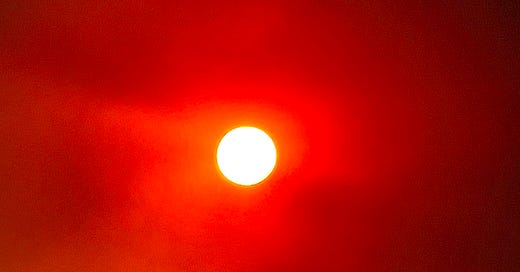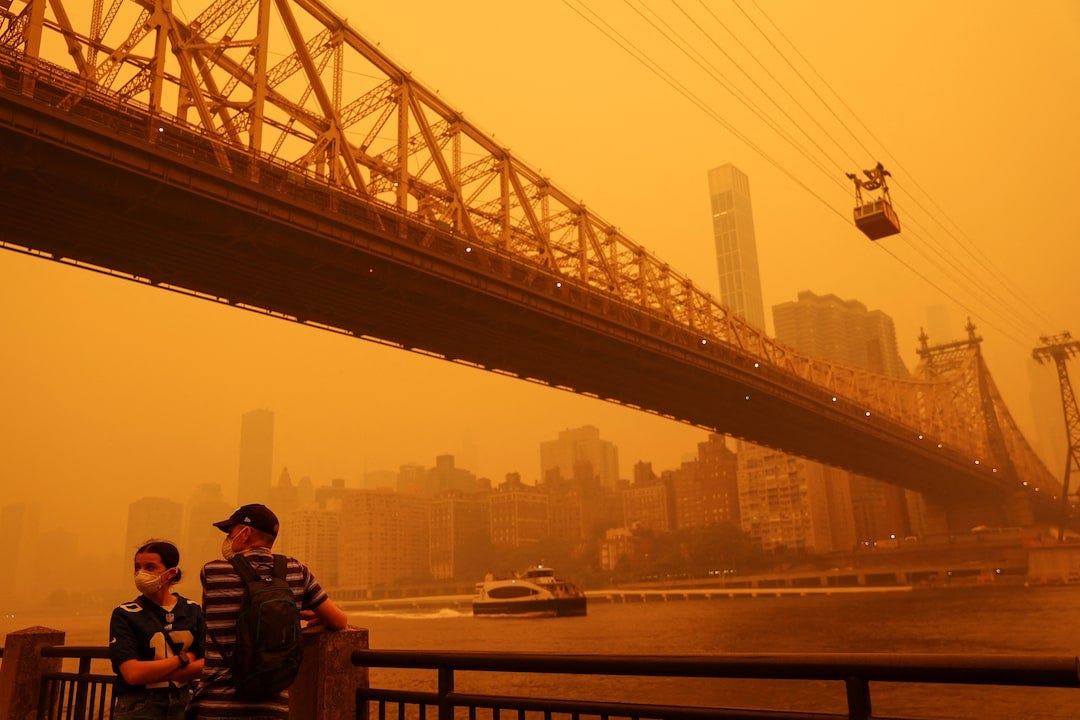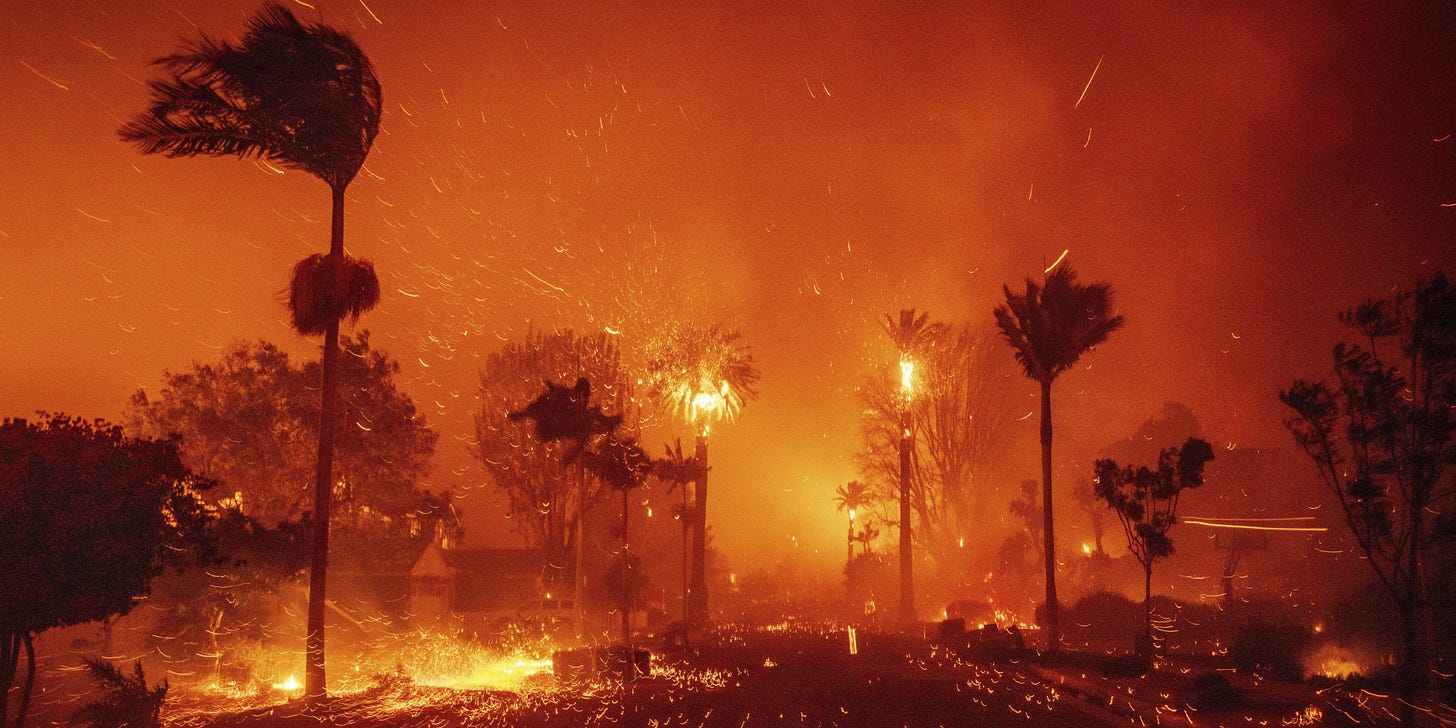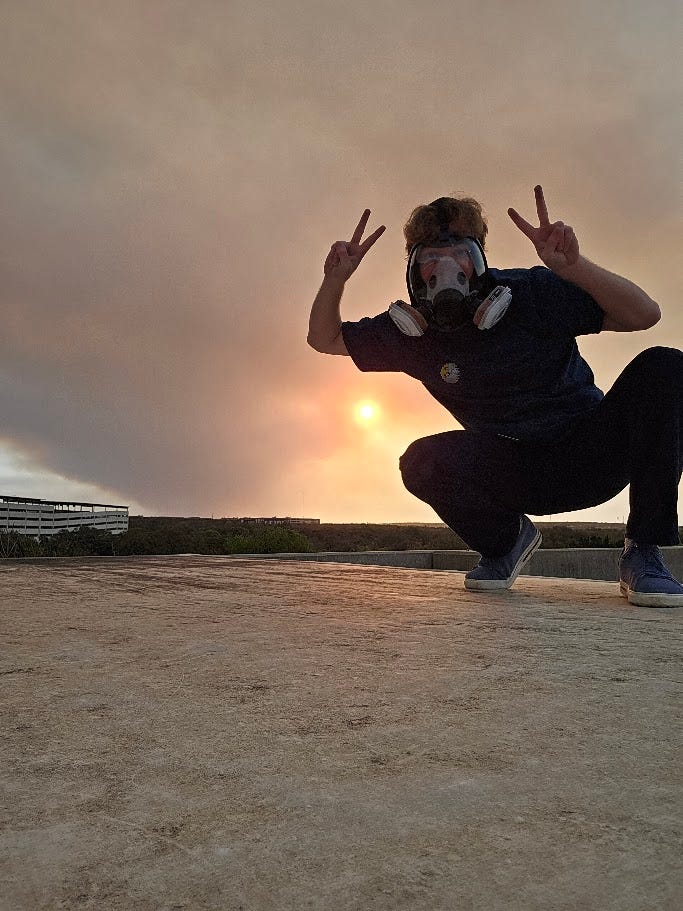Wildfire Worries of a Water Engineer
Can Austin lead the way in designing our cities for the right fire scenarios?
In the past few years, wildfires have wreaked havoc across America. 2023 saw the East Coast blanketed in smoke as fires raged in the Canadian wilderness, and a brutal fire in Maui that killed over 100 people
2024 saw the Park fire consume over 400,000 acres in Northern California.
And 2025 started with the infamous Eaton and Palisades Fires in L.A, which destroyed more than 16,000 structures, burned 50,000 acres, and represented an estimated $275 billion in damage and loss.

Today in Austin, I woke up to the smell of smoke. A light dusting of ash fell from the sky, mixing with the pollen to coat my windshield. Smoke had been blowing for hours from a 400 acre fire in Fredericksburg TX, nearly 60 miles from where I lived. Here’s a video of the smoke blowing in. The fire is still 0% contained at time of writing.
Although in no immediate danger, today’s fire ought to serve as a wakeup call for the Austin metro area. In 2025, we are the city that builds. You can throw a rock in the city and trigger a feeding frenzy of developers hoping to site homes on it. But we could just as easily be the city that burns.
The city council meets this month to discuss updating rules about fire risk. Austin is currently the 5th most at risk city in the U.S. for number of homes imperiled by wildfire, and ranks #1 outside of California. The council discussion will include an update to the city’s wildfire risk map proposed by the fire department, which would classify 71% of land parcels in the city as vulnerable, compared to the 38% classified vulnerable in 2015.
The speed at which a fire can spread is mainly driven by wind and the proximity of structures to wildlands. The interface between a city’s urban area and these wildlands is called the W.U.I. (Wildlands Urban Interface). Here is a recently proposed map of Austin’s W.U.I.
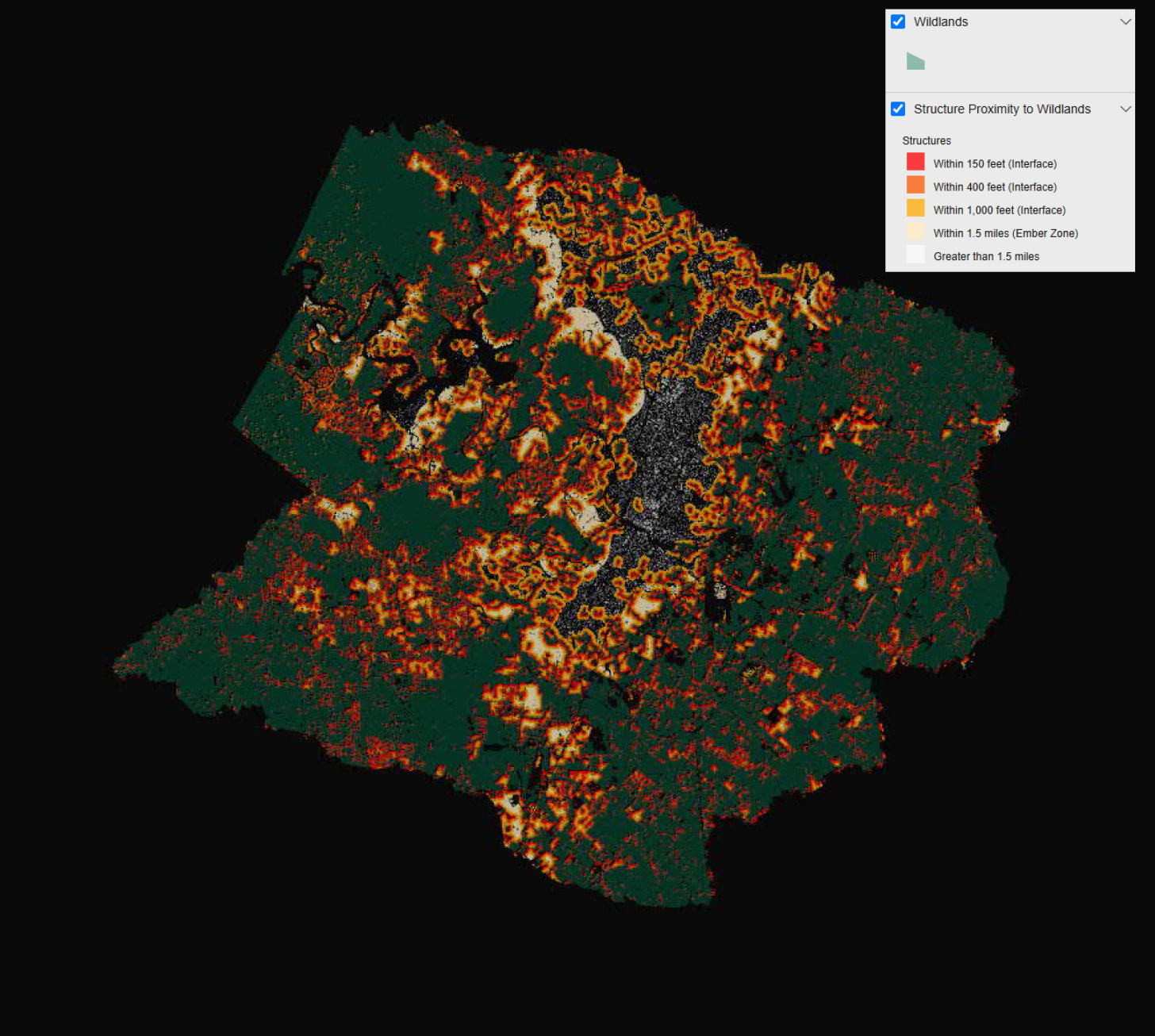
Because most fires are driven by embers and spread by wind, a sufficiently large fire could easily trigger multiple subsequent outbreaks. across large areas, tying up response teams in a game of Whac-a-mole. Even assuming crews get to every fire in time, can we guarantee that there will be pressure in the hydrants to supply them if the tanks in their trucks aren’t enough? As a water system designer, I have a worry in my gut that the answer is no, and here is why.
Water System Design & Austin
Urban systems are often designed to handle a specific set of worst case scenarios, which do not include wildfires. The Texas Commission on Environmental Quality (TCEQ) mandates that Public Water Systems maintain a minimum pressure of 35 psi during normal operating conditions, and a minimum of 20 psi under the condition that they serve both fire flow and regular demand. Typically, designers model these parameters per pressure zone (learn more about pressure zones here), and test the zone’s infrastructure against a number of scenarios to determine which scenario controls design.

Austin Water designs to meet peak day demands (highest demand day in the year) plus fire flow. But this does not model a wildfire scenario well, specifically because a large wildfire might mean multiple fires, all at once. Single family homes might need an hour of 1000gpm fire flow, while high density or industrial buildings with volatile fuels might require fire flows of 3000-4000gpm for multiple hours, but one can easily imagine a scenario where 10s of fires spring up in a pressure zone, due to embers. In areas already evacuated, these fires are much less likely to be noticed and called in, allowing them to burn long enough to throw embers of their own even further from the initial fire.
Preventing the next Palisades
Real-world events like the Palisades fire have illustrated the mismatch between design assumptions and wildfire realities. If we act quickly, Austin can act as an example and help other cities avoid a repeat of events like the Palisades and Eaton fires. In those fires, the municipal water system could not keep up – fire hydrants started running dry, forcing firefighters to scramble for water. Officials reported that the area’s three major water storage tanks (each about 1 million gallons) were rapidly depleted by the firefighting efforts. According to the Los Angeles Department of Water and Power, the first tank drained by late afternoon, the second by evening, and the third was empty overnight – the demand simply outpaced the system’s ability to refill or maintain pressure.
Once those tanks were drained, hydrant pressure plummeted and some crews had no water to fight the advancing flames. This was not due to any single hydrant’s performance (each individual hydrant can flow a lot of water), but because so many hydrants were in use simultaneously that the entire local distribution network was overwhelmed. While the Palisades firefighters also faced a power shutdown, the sheer volume of water being drawn from the system was beyond what it was designed for, so even with pumps on, the situation would have been dire.
History has shown that the map is not the territory, and code-compliant systems fail in extreme scenarios. The Palisades Fire in particular provides a cautionary tale: even with a “properly” designed, modern water system, wildfire-driven simultaneous ignitions lead to firefighting failures.
What’s wrong with current design codes?
The fundamental shortcoming is that current design codes are built around typical fire incidents – they do not require engineering for many fires at once. This is largely a practical compromise: designing every water system to handle a full-scale wildfire or multi-structure urban fire is costly and was historically viewed as unnecessary.
The probability of, say, 5+ houses on the same street burning at once was low, so standards focused on the single worst-case fire. As a result, the distribution mains, pump stations, and storage in the Austin area are typically not sized for simultaneous multi-fire demands beyond perhaps two nearby hydrants. When confronted with a wildfire, this built-in limitation means the system can’t guarantee adequate flow to all points in need.
Additionally, current codes don’t explicitly address scenarios like power loss during a fire – if electric pumps shut down (as happened in the Palisades incident), a system reliant on pumping will quickly lose pressure unless backup power or gravity-fed storage is available. Austin’s water system has many gravity-fed zones (elevated storage tanks), but also uses pump stations for high elevation areas, so it is similarly vulnerable if those pumps lack backup generators (this is being addressed after Texas’ big freeze caused power loss at many points of critical infrastructure).
Another gap is that peak demand contingencies are minimal – on a record high-use day (usually coinciding with one of the driest and hottest days of the year, which also coincide with wildfire risk), there may be little safety margin beyond what’s needed for one fire. In essence, today’s codes ensure a robust baseline (one fire at 20 psi), but do not ensure resilience against a catastrophic wildfire scenario.
How can we fix this?
(I’ll stick to system design and operations stuff here, but there are tons of changes that we can make to our buildings themselves to make them more fire resistant, so just keep that in mind.)
To improve wildfire resilience, codes and design criteria could be updated to acknowledge multiple simultaneous fire flows in high-risk areas. For example, a water district in San Diego’s high fire hazard zone adopted a policy to size the system for two simultaneous 2,500 gpm fires for 2 hours, given that their service area is in a Very High Fire Severity Zone. A change like this in Austin would increase infrastructure costs, but provide a buffer if several houses ignite at once.
Increasing local water storage in fire-prone areas can also help bolster an area against wildfire, especially in a power loss scenario. Water already stored at higher elevations (like in a water tower) doesn’t need pumps to run to get to lower elevation areas.
Operationally, utilities and fire departments can coordinate on emergency demand management. Austin Water might implement an emergency demand curtailment plan on extreme fire weather days – for instance, sending alerts to residents to immediately stop all outdoor water use when a wildfire is in the vicinity. By quickly reducing domestic demand, more system capacity is freed for fire flows. During the Palisades Fire, Los Angeles officials literally begged residents to conserve water so firefighters could use it. Greater degrees of interconnectivity between different public water systems would also help systems in need to channel water from their neighbors when they can’t keep up themselves
In conclusion, current design codes ensure reliability for ordinary fires but not for wildfires. Addressing this gap will likely require a combination of code changes (to require higher fire-flow capacities or multiple-flow scenarios in high-risk areas), infrastructure investments (bigger pipes, more elevated storage, backup power), and supplemental strategies (sprinklers, demand management).
I have faith in my colleagues in water engineering and planning, and in the Austin City Council to read the smoke signals when they convene on the 27th. Ensuring Austin can stay the city that builds without becoming the city that burns is a fine line to walk, but if any city in America is going to be an example for others to follow, I think it will be us!
-Connor, OfAllTrades.
Like this article? Please Subscribe!
Know someone who would? Please Share!


